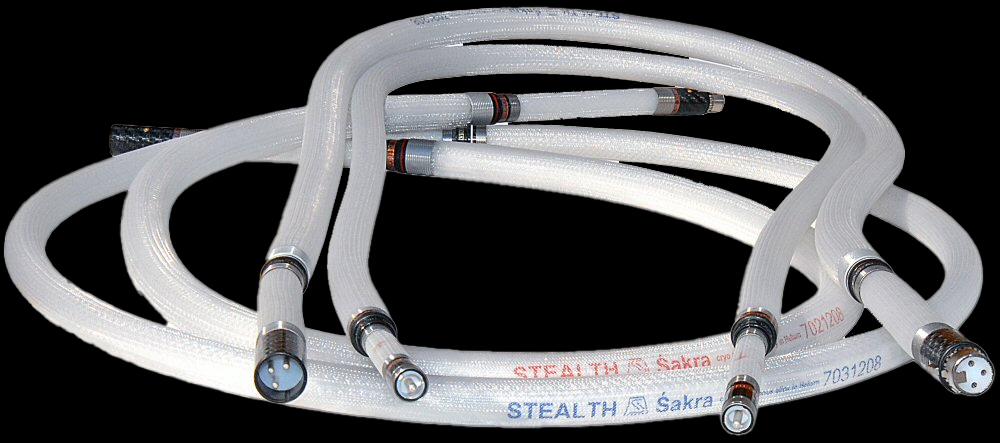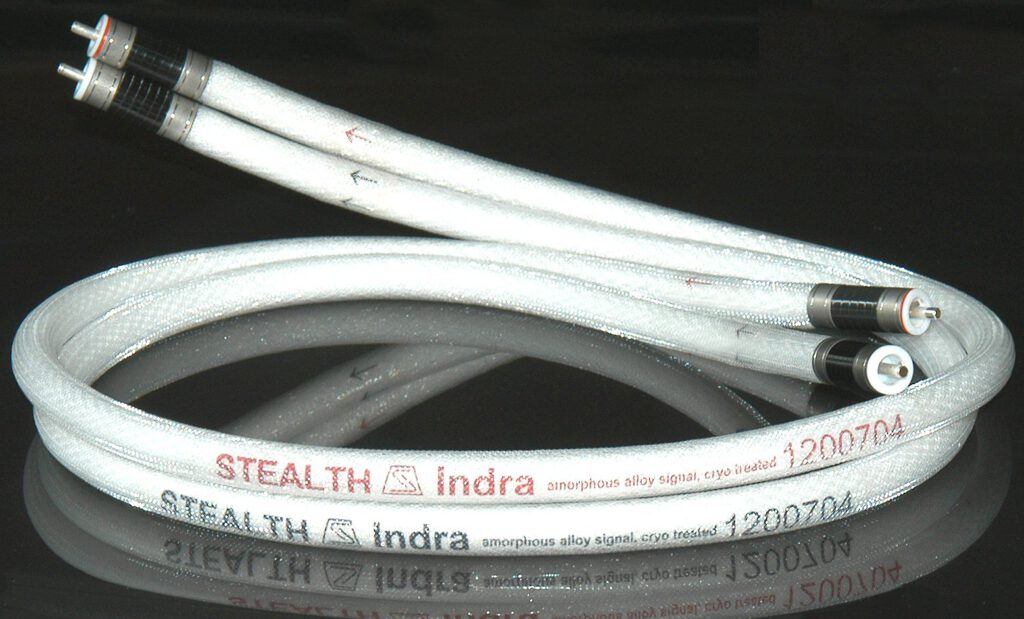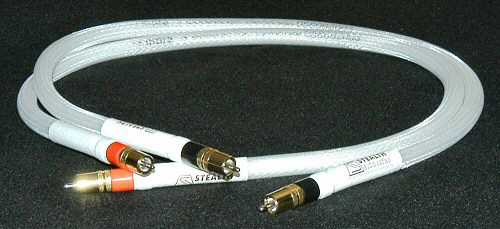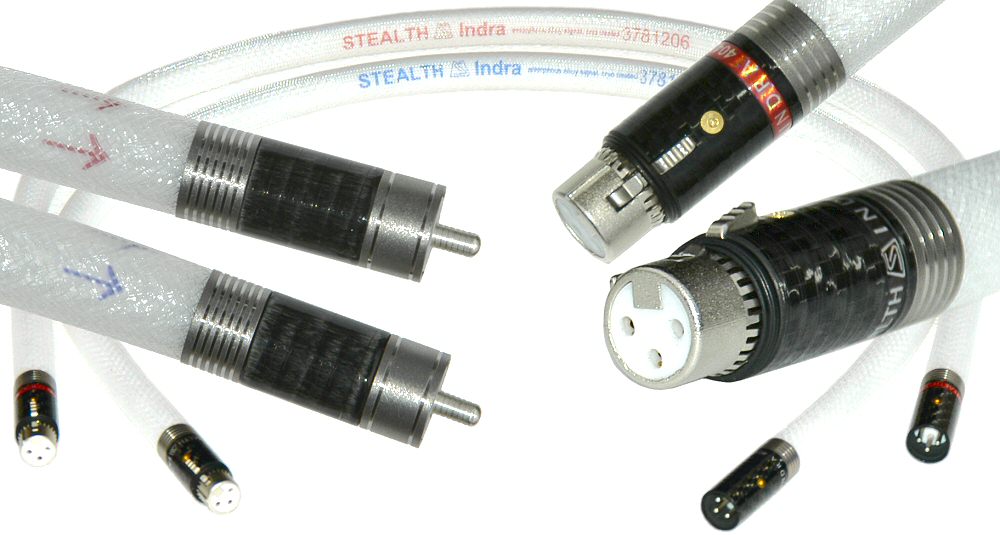The Indra revision 18 (V18) offers improvements over the previous Indra revisions in a number of the original key Indra features, immediately related to the sound quality, in particular 4,5, 6, 8 and 9 ( specified and explained below), and also improvements in appearance.
In 2007, we started experimenting with Ultra-modified PTFE (Teflon material), which lead to development of our newest proprietary connectors – both RCA and XLR – that use this type of Teflon instead of the conventional PTFE. The Ultra-modified PTFE features superior dielectric properties (reduced permeability and a lower dielectric constant – which offer even lower energy storage and further reduced “crossover-type” distortion in cables and connectors), better mechanical characteristics (significantly lower deformation under load, higher elongation and tensile strength – these qualities improve the “grip” of the STEALTH connectors on the chassis mounted counterparts), plus a pore-free and extremely smooth surface – preventing contaminates from being trapped in high purity applications. Appearance-wise, the Ultra-modified PTFE is similar to the PTFE, the only visual difference is a shade of blue in the Ultra-modified version.
Please note the multiple grooves on one of the Titanium rings on the RCA connector, and machined Carbon Fiber shells with multigroove Titanium rings of these new XLR connectors – versus solid Titanium shells on the revision “P” 2005/2006/2007 XLR connectors. The center pin of the RCA connector has also changed: it now has a rounded tip and microgrooves for a better contact. If a contacts enhancer is used, these grooves would “hold” it better than a smooth pin.
The standard connectors for the pre-release (beta testing) Indra cables were: Cardas Ultimate (RCA) and Neutrik XLRs;
The early production (REVISION “EP”)****, made until mid-2005) balanced Indra also had Neutrik XLRs; However, none of the production RCA-terminated Indra cables were ever made with Cardas RCA connectors. The early production (REVISION “EP”) RCA-terminated Indra cables are shown at the picture below and features STEALTH designed and made proprietary RCA connectors.
The full production (REVISION “P”) made from mid 2005 until the end of 2007, featured STEALTH designed proprietary RCA or XLR connectors (machined Teflon dielectric, solids silver contacts, machined Titanium/carbon fiber shells)
The Indra has several key design points (features):
1. Unique Amorphous conductive media (wire) – which is perfectly homogeneous, identical in all directions, since it has
no crystal structure;
2. Ultra thin – 50 AWG – wire – important in minimizing skin effect and time-domain errors – combined with very strong
core, to eliminate breakage, thus assuring 100% reliability, otherwise impossible with ultra thin wire.
3. individually insulated strands (to eliminate direct contact, i.e. electrical interaction between strands)
4. special geometry (STEALTH proprietary distributed LITZ) strands are separated in space from each other to the far
greater distance compare to the wire diameter) – to dramatically reduce electromagnetic interaction between strands
5. electrical resonance control (due to the special geometry: STEALTH distributed LITZ)
6. mechanical resonance control (dielectric and jacketing mechanical properties: density and damping)
7. very good dielectric (porous – i.e. foam-like Teflon)
8. Characteristic impedance control (optimum relationships among capacitance, inductance and DC resistance)
9. Proprietary connectors, designed and made by STEALTH + special termination technique (conductive composite
reinforced high pressure crimping = cold weld)






